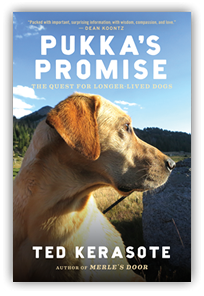 |
Return of the Wild The Future of Our National Lands by Ted Kerasote, editor Island Press Publication date: 2001 paperback | 225 pages Visit your local bookseller or order here: |
| As individuals and as a nation we believe that if we recycle and buy fuel-efficient cars we have done our part to protect the environment. Yet an important element is missing. If we don't conserve the still-undeveloped places of the earth, human life will be disconnected from its fellow animals and torn from its roots. Humans will still exist, but as Ted Kerasote explains in his insightful introduction, "we'll be like potted trees in the foyers of great skyscrapers—alone and not part of a wider forest." Our efforts to recycle and conserve energy must be augmented with advocacy for the protection of wild spaces, and Return of the Wild is an important underpinning for that endeavor: a guide through the issues of the day, a history, a forum for debate, a source of information. Sponsored by the Pew Wilderness Center, the book brings together leading thinkers and writers to examine why nature in its most untrammeled state is vitally important to all of us; what currently threatens wild country; and what can be done not merely to conserve more of it, but also to return it to our lives and consciousness. Contributors including Vine Deloria, Jr., Chris Madson, Mike Matz, Richard Nelson, Thomas M. Power, Michael Soulé, Jack Turner, and Florence Williams consider a wide range of topics relating to wildlands, and explore the varied economic, spiritual, and ecological justifications for preserving wilderness areas. The book also features a completely new four-color mapping of the remaining roadless areas on federal lands, as well as the National Wilderness Preservation System, now measuring 106 million acres, in which much of this roadless land could one day be included. This first annual edition is both an inspiring and thoughtful introduction to wilderness subjects for the general public and an invaluable reference for legislators, the media, and conservation organizations. It is an essential new contribution to wilderness preservation efforts. |
|
































